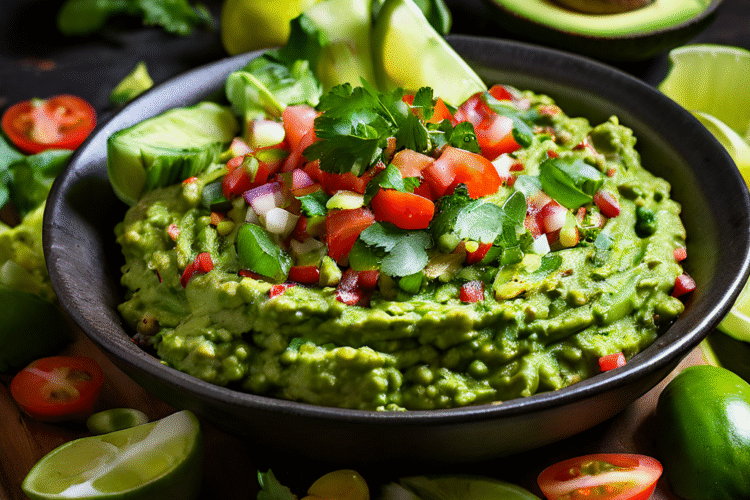Master the art of guacamole with our ultimate guide. Learn tips, tricks, and recipes to create a deliciously creamy dip that impresses every time.
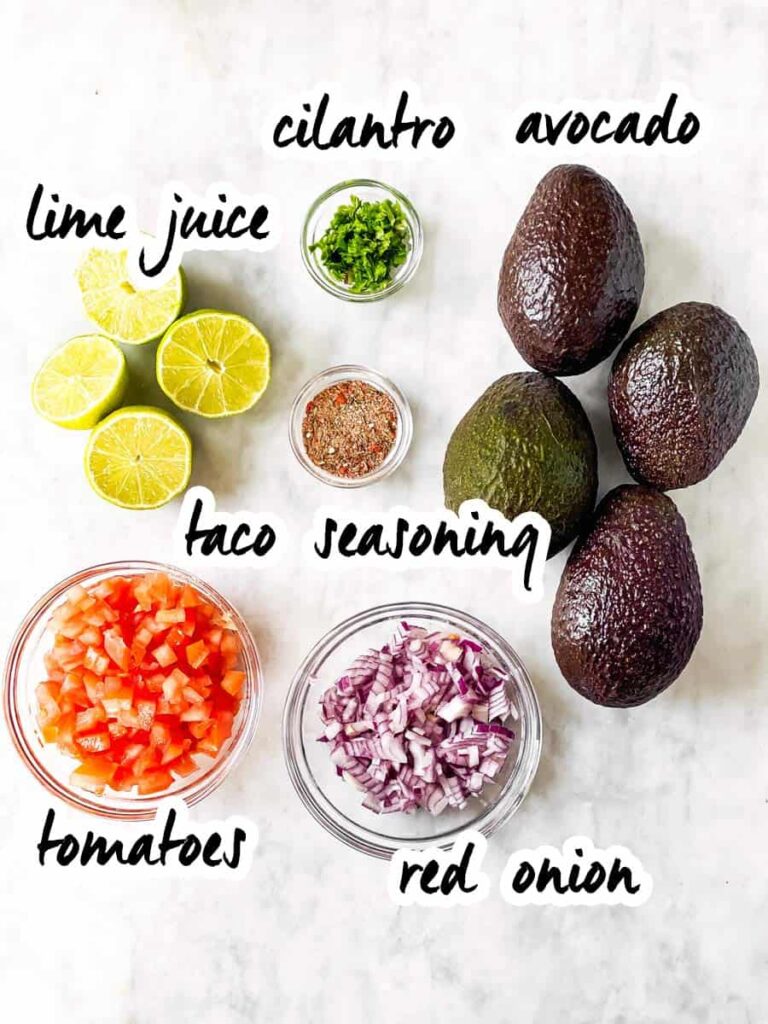
Ah, guacamole. The mere mention of it conjures images of festive gatherings, sunny patios, and the satisfying crunch of a tortilla chip laden with creamy, vibrant green goodness. It’s more than just a dip; it’s a celebration of fresh ingredients, a testament to the magic that happens when simple components come together in perfect harmony.
While store-bought guacamole can suffice in a pinch, there’s truly nothing that compares to the flavor, texture, and sheer satisfaction of making your own. And the best part? It’s incredibly easy! Today, we’re diving deep into the world of guacamole – specifically, the classic, beloved version featuring mashed avocado, zesty lime, fresh cilantro, and juicy diced tomatoes. We’ll explore everything from selecting the perfect avocados to mastering the mash, customizing to your heart’s content, and serving it up in style.
Get ready to elevate your dip game and become the guacamole guru among your friends and family!
Why Make Guacamole at Home? The Freshness Factor
Before we delve into the nitty-gritty, let’s talk about why homemade guacamole reigns supreme:
- Unbeatable Freshness: This is paramount. Commercial guacamoles often contain preservatives, fillers, or are made with less-than-peak-condition avocados to extend shelf life. Homemade means you control the quality and ensure every bite bursts with the pure, unadulterated taste of fresh ingredients.
- Customization King: Like it spicier? Add more jalapeño. Cilantro fiend? Double it up. Prefer it chunky or smooth? You’re the chef! Homemade guacamole allows you to tailor the recipe precisely to your palate.
- Cost-Effective: Especially when avocados are in season, making a large batch of guacamole at home is significantly more economical than buying multiple small tubs from the store.
- Know What’s In It: No mystery ingredients, no unpronounceable additives. Just pure, wholesome goodness. This is particularly important for those with dietary restrictions or preferences.
- The “Wow” Factor: Let’s be honest, presenting a bowl of freshly made guacamole you whipped up yourself is always impressive. It’s a simple effort with a big payoff in flavor and appreciation.
The Anatomy of Amazing Guacamole: Ingredient Deep Dive
The beauty of this classic guacamole lies in its simplicity. But simple doesn’t mean skimping on quality. Each ingredient plays a crucial role:
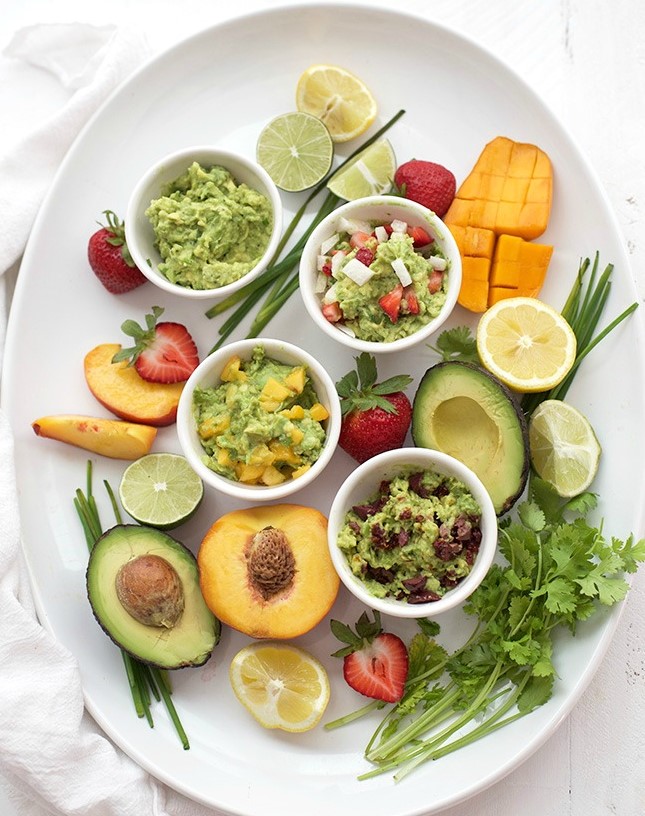
1. The Star: Avocados
This is non-negotiable. The quality of your avocados will make or break your guacamole.
- Best Variety: Hass avocados are generally preferred for guacamole due to their creamy texture, rich flavor, and high fat content. They have a distinctive pebbly, dark green (almost black when ripe) skin. Other varieties can be used, but may be more watery or less flavorful.
- Choosing Ripe Avocados:
- Color: For Hass avocados, look for a skin that has turned from bright green to a very dark green, purplish, or almost black.
- Feel: Gently press the avocado near the stem. It should yield to gentle pressure, similar to a ripe peach. If it’s rock hard, it’s underripe. If it feels mushy or has indentations, it’s likely overripe and may have brown spots inside.
- The Stem Test: Try to flick off the small stem nub at the top. If it comes off easily and you see green underneath, it’s likely ripe. If it’s hard to remove or you see brown, it might be overripe or already browning. If it’s bright yellow-green, it may need another day.
- Ripening Avocados:
- Room Temperature: If your avocados are hard, leave them on the counter at room temperature for a few days.
- Speeding it Up: Place them in a paper bag (brown is best) with an apple or banana. These fruits release ethylene gas, which speeds up ripening. Check daily.
- Slowing it Down: Once ripe, you can store avocados in the refrigerator for a few days to slow down further ripening.
- Preparing Avocados:
- Wash the exterior of the avocado.
- Place it on a cutting board. Carefully slice it lengthwise around the pit, from top to bottom.
- Twist the two halves apart.
- To remove the pit:
- Safest Method: Gently scoop the pit out with a spoon.
- Common (Use Caution!) Method: Carefully but firmly whack the pit with the sharp edge of a sturdy chef’s knife so it embeds slightly. Twist the knife, and the pit should come out. Always do this with the avocado half stabilized on a cutting board, never while holding it in your hand. To remove the pit from the knife, don’t use your fingers; press the pit against the edge of your compost bin or trash can to dislodge it.
- Scoop the avocado flesh out of the skin with a spoon into your mixing bowl.
2. The Zest: Lime Juice
Lime juice is more than just a flavoring agent; it’s a chemical workhorse.
- Flavor: It adds essential brightness and acidity that cuts through the richness of the avocado, balancing the flavors.
- Prevents Browning: The ascorbic acid (Vitamin C) in lime juice significantly slows down the oxidation process that turns avocados brown when exposed to air.
- Fresh vs. Bottled: ALWAYS use fresh lime juice. The flavor is far superior and brighter. Bottled lime juice often has a “cooked” or metallic taste and can contain preservatives. You’ll typically need 1-2 juicy limes for an average batch.
3. The Freshness Herb: Cilantro
Cilantro is a polarizing herb – people tend to love it or (due to a genetic quirk) find it tastes like soap. For those who love it, it’s indispensable in guacamole.
- Flavor Profile: It adds a fresh, citrusy, and slightly peppery note.
- Stems vs. Leaves: The tender upper stems of cilantro are packed with flavor and can be chopped right along with the leaves. Avoid the thicker, woodier lower stems.
- Preparation: Wash cilantro thoroughly by swishing it in a bowl of cold water to remove any grit. Pat it dry with paper towels or use a salad spinner before chopping. Fine to medium chop is usually best.
4. The Juicy Bite: Diced Tomatoes
Tomatoes add sweetness, a bit of acidity, and a pleasant textural contrast.
- Best Varieties: Roma tomatoes are a great choice because they are meatier and have fewer seeds and less water content than other varieties. Vine-ripened or heirloom tomatoes can also be excellent if they are firm and flavorful.
- Seeding (Recommended): To prevent your guacamole from becoming watery, it’s highly recommended to seed the tomatoes. Simply quarter the tomato, then use a small spoon or your finger to scoop out the watery pulp and seeds.
- Dicing: Aim for a small, uniform dice (about ¼ to ½ inch) so the tomato integrates well without overwhelming the avocado.
5. The Pungent Foundation: Onion (Optional, but Recommended)
Onion adds a sharp, savory depth.
- Best Varieties:
- Red Onion: Offers a vibrant color and a relatively mild, crisp bite. Its flavor can be quite assertive.
- White Onion: Sharper and more pungent than red onion. A classic choice.
- Sweet Onion (like Vidalia): Milder and sweeter, good if you prefer less onion intensity.
- Taming the Bite: If you find raw onion too strong, you can mellow its flavor by:
- Finely dicing the onion.
- Soaking the diced onion in cold water for 10-15 minutes.
- Draining it thoroughly before adding to the guacamole.
- Dicing: A very fine dice is crucial here so you don’t get large, overpowering chunks of raw onion.
6. The Kick: Jalapeño (Optional)
For those who like a little heat.
- Flavor: Adds a fresh, green spiciness.
- Controlling Heat: Most of the capsaicin (the compound that makes peppers hot) is concentrated in the seeds and the white pith (membranes) inside the pepper.
- For Mild Heat: Remove all seeds and pith.
- For Medium Heat: Leave some pith, remove seeds.
- For Hot: Include seeds and pith.
- Preparation: Wear gloves if you have sensitive skin, or be sure to wash your hands thoroughly with soap and water after handling jalapeños. Avoid touching your eyes! Finely mince the jalapeño. You can start with half a jalapeño and add more to taste. Serrano peppers can also be used for a cleaner, often hotter, kick.
7. The Enhancer: Salt
Salt is not just for “saltiness”; it enhances and melds all the other flavors.
- Type: Kosher salt or fine sea salt are excellent choices as they dissolve well and have a clean taste.
- To Taste: The amount of salt needed will vary based on your avocados and personal preference. Always start with a smaller amount, mix, taste, and add more if needed. It’s easier to add salt than to take it away!
Essential Tools for Guacamole Greatness
You don’t need fancy gadgets, but a few key tools will make the process smoother:
- Large Mixing Bowl: Preferably non-reactive (glass, ceramic, or stainless steel). A traditional molcajete (lava stone mortar and pestle) is fantastic if you have one and want an authentic texture.
- Fork: For mashing the avocados. A potato masher can also work if you prefer a smoother consistency or are making a large batch.
- Sharp Chef’s Knife: For dicing tomatoes, onions, cilantro, and jalapeños.
- Cutting Board: A stable surface for all your chopping.
- Spoons: For scooping avocados, seeding tomatoes, and tasting.
- Citrus Juicer/Reamer: To get the most juice from your limes.
The Ultimate Classic Guacamole Recipe
(Image: A step-by-step collage: 1. Avocados halved. 2. Avocados mashed in a bowl. 3. Other ingredients chopped. 4. All ingredients being mixed.)
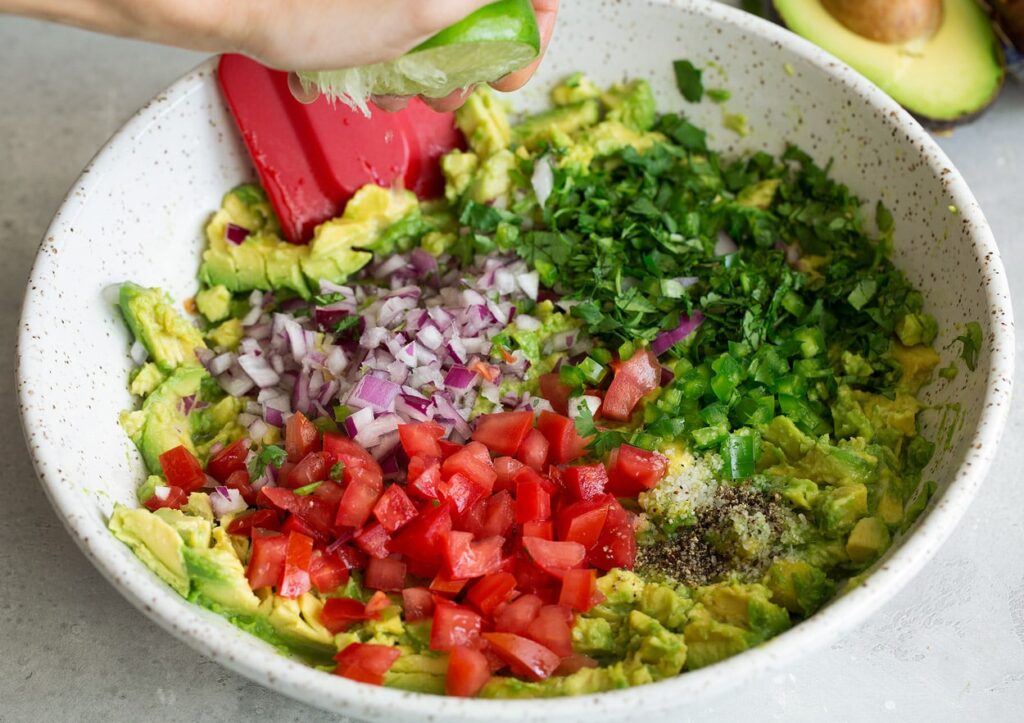
This recipe is a fantastic starting point. Feel free to adjust quantities based on your preferences and the size/ripeness of your ingredients.
Yields: Approximately 3-4 cups
Prep time: 15-20 minutes
Ingredients:
- 3 large ripe Hass avocados
- Juice of 1-2 fresh limes (start with 1, add more to taste)
- ½ cup finely diced red onion (or white onion, soaked if desired – about ½ small onion)
- 1-2 medium Roma tomatoes, seeded and finely diced (about ½ – ¾ cup)
- ½ cup chopped fresh cilantro, tender stems and leaves
- 1 jalapeño, seeded (optional, for less heat) and finely minced
- ½ – ¾ teaspoon kosher salt, or to taste
- Optional Pinch of ground cumin (for a subtle smoky depth, ¼ teaspoon)
- Optional 1 clove garlic, very finely minced or grated (use sparingly as raw garlic can be overpowering)
Equipment:
- Large mixing bowl
- Fork or potato masher
- Sharp knife
- Cutting board
- Spoons
Instructions:
Phase 1: The Avocado Base
- Prepare Avocados: Halve the avocados lengthwise and remove the pits. Scoop the avocado flesh into your large mixing bowl.
- Add Lime Juice: Squeeze the juice of one lime over the avocado flesh immediately. This not only adds flavor but also helps prevent browning.
- Mash to Desired Consistency: Using a fork (for chunkier guacamole) or a potato masher (for smoother guacamole), mash the avocados against the side of the bowl.
- Chunky Style: Leave plenty of larger avocado pieces. Don’t over-mash.
- Smoother Style: Mash more thoroughly, but still aim for some texture. Completely smooth guacamole can sometimes feel a bit baby-food-like.
- Tip: It’s better to slightly under-mash at this stage, as the avocado will break down further when you mix in the other ingredients.
Phase 2: Incorporating the Aromatics & Flavor
- Add Onion, Cilantro, Jalapeño: Add the finely diced red onion, chopped cilantro, and minced jalapeño (if using) to the bowl with the mashed avocado.
- Add Seasonings: Sprinkle in ½ teaspoon of kosher salt. If using, add the optional ground cumin and/or minced garlic now.
- Gentle Mixing: Gently fold these ingredients into the mashed avocado using a spoon or spatula. Be careful not to overmix, which can make the guacamole pasty and release too much water from the vegetables. You want to combine everything while maintaining some avocado texture.
Phase 3: The Tomato Touch & Final Adjustments
- Fold in Tomatoes: Add the diced (and seeded!) tomatoes to the bowl. Gently fold them in. Mixing too vigorously can make the tomatoes release excess liquid and turn the guacamole watery.
- Taste and Adjust (CRUCIAL STEP!): This is where your guacamole goes from good to great.
- Use a clean chip or spoon to taste.
- Needs more brightness/acidity? Add a little more lime juice.
- Needs more salt? Add a pinch more, mix gently, and taste again.
- Not spicy enough? If you reserved some jalapeño, add it now. Or consider a tiny dash of hot sauce.
- A bit bland? Sometimes a tiny bit more onion or cilantro can liven it up.
- Remember: It’s always easier to add more than to take away. Adjust seasonings in small increments.
Phase 4: Serving (and a Little Rest)
- Serve Immediately (Best): Guacamole is best enjoyed fresh. Transfer to a serving bowl.
- Optional Rest (Flavor Melding): If you have 15-30 minutes, you can cover the guacamole (see storage tips below to prevent browning) and let it sit at room temperature or in the fridge. This allows the flavors to meld and deepen slightly. If refrigerating, let it sit out for about 10-15 minutes before serving to take the chill off, as flavors are more pronounced at room temperature.
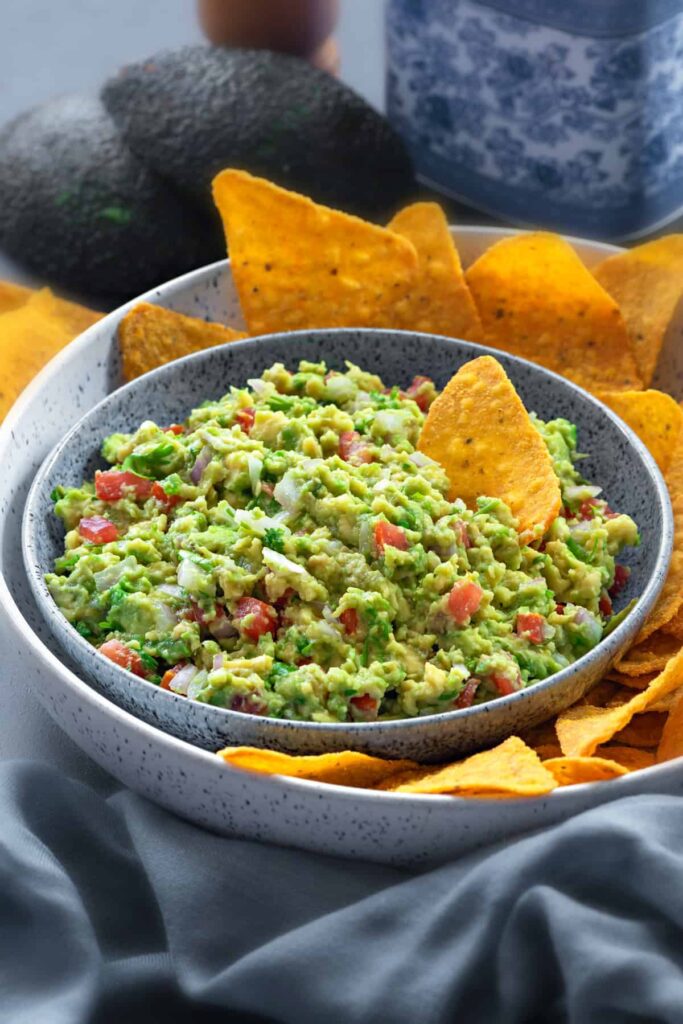
Tips for Guacamole Perfection & Troubleshooting
- Don’t Overmix: This is worth repeating! Overmixing bruises the avocado, releases too much liquid from the tomatoes and onions, and can result in a gummy, watery texture. Gentle folding is key.
- Taste As You Go: Your taste buds are your best guide. What tastes perfect to one person might need more salt or lime for another.
- Use Ripe but Firm Avocados: Mushy, overripe avocados will result in a less appealing texture and potentially off-flavors. Rock-hard avocados will be impossible to mash and won’t have developed their creamy flavor.
- Fresh is Best (Ingredients): The difference between fresh lime juice and bottled, or fresh cilantro versus dried, is night and day.
- Balance is Key: Aim for a harmonious blend of creamy avocado, zesty lime, fresh herbs, and savory elements. No single ingredient should completely overpower the others.
Troubleshooting Common Guacamole Issues:
- Guacamole is Turning Brown:
- Prevention: Lime juice is your first line of defense. Ensure enough is used. Also, limit air exposure.
- Quick Fix for Surface Browning: If the very top layer has browned slightly, you can often gently scrape it off without affecting the flavor of the guacamole underneath.
- Guacamole is Too Salty:
- Dilution: The best fix is to add more unsalted mashed avocado to the mix. If you don’t have more avocados, a little extra finely diced tomato (unsalted) or even a tiny bit more lime juice might help balance it, but adding more avocado is ideal.
- Guacamole is Too Bland:
- Seasoning Check: It likely needs more salt. Add a pinch, mix, and taste.
- Acidity Boost: A squeeze of lime juice can awaken dull flavors.
- Aromatic Lift: A little more finely minced onion, cilantro, or even a touch of jalapeño can add complexity.
- Guacamole is Watery:
- Cause: Usually from not seeding tomatoes properly, overmixing, or using watery avocado varieties.
- Prevention: Seed tomatoes thoroughly. Be gentle when mixing.
- Minor Fix: If slightly watery, try gently draining off any visible liquid. You can also try to very carefully fold in a bit more mashed avocado if you have some. Sometimes, letting it sit in the fridge for a short while can help the excess liquid separate, which you can then pour off.
Preventing the Dreaded Browning: Storage Secrets
Avocado oxidizes (reacts with oxygen) quickly, leading to browning. While perfectly safe to eat, brown guacamole isn’t visually appealing. Here’s how to keep it greener for longer:
- Lime Juice: As mentioned, this is crucial from the start.
- Plastic Wrap “Press and Seal”:
- Transfer guacamole to an airtight container.
- Smooth the surface of the guacamole with the back of a spoon to eliminate air pockets.
- Place plastic wrap directly onto the surface of the guacamole, pressing down gently to ensure there’s no air trapped between the wrap and the dip.
- Then, put the lid on the container.
- The Water Layer Method (Surprisingly Effective for Short-Term):
- Smooth the surface of the guacamole in its container.
- Gently pour a thin layer (about ½ inch) of lukewarm or cool water over the surface of the guacamole. This creates an oxygen barrier.
- Cover the container with a lid or plastic wrap and refrigerate.
- When ready to serve, carefully pour off the water. Give the guacamole a gentle stir. This method works best if you plan to eat it within 24-36 hours.
- Extra Lime/Onion on Top: Some people swear by placing a lime slice or a thin slice of onion directly on the surface before covering with plastic wrap. The theory is the acidic vapors help.
How Long Does Homemade Guacamole Last?
Properly stored in the refrigerator using one of the methods above, homemade guacamole can last for 2-3 days. The texture might soften slightly, and some minor discoloration might still occur, but it should still be tasty. Always use your senses (sight, smell, taste) to judge if it’s still good.
Customizing Your Guacamole: Variations to Explore
Once you’ve mastered the classic, the world of guacamole customization opens up!

- Spice It Up (or Down):
- Serrano Peppers: For a cleaner, often more intense heat than jalapeños.
- Chipotle Peppers in Adobo: Mince a small amount for a smoky, deep heat. A little adobo sauce also adds great flavor.
- Smoked Paprika: Adds smokiness without much heat.
- Cayenne Pepper: A pinch for straightforward heat.
- Fruity Twists:
- Mango Guacamole: Add ½ cup of finely diced ripe mango for a sweet and tropical counterpoint.
- Pineapple Guacamole: Diced fresh pineapple adds sweetness and tang. Grill it first for extra smoky flavor!
- Pomegranate Seeds: Sprinkle on top for a burst of juicy sweetness, tartness, and a beautiful jewel-like appearance.
- Veggie Power-Ups:
- Roasted Corn: Adds sweetness and a slightly chewy texture.
- Diced Bell Peppers: Red, yellow, or orange bell peppers add sweetness and crunch (dice finely).
- Black Beans: Rinsed and drained, for added protein and texture.
- Cheese, Please:
- Cotija Cheese: Crumble this salty, dry Mexican cheese on top just before serving.
- Queso Fresco: Similar to cotija but milder and moister.
- Herbal Adventures:
- Mint: A small amount of finely chopped fresh mint can add an unexpected fresh note, especially good with fruity variations.
- Oregano (Mexican): A pinch can add an earthy depth.
- Texture Play:
- Toasted Pepitas (Pumpkin Seeds): Sprinkle on top for crunch and nutty flavor.
- Bacon Bits: Crispy, crumbled bacon for a smoky, savory hit.
A Note on Garlic:
While some people love garlic in their guacamole, raw garlic can be very potent and easily overwhelm the delicate avocado flavor. If using, use it sparingly – one small clove, very finely minced or grated (using a Microplane zester is ideal for this), is usually sufficient. Roasting the garlic first mellows its flavor significantly and adds a sweet, caramelized note.
Serving Suggestions: Beyond the Chip
While tortilla chips are the classic pairing, guacamole is incredibly versatile:
- The Obvious: With tortilla chips (corn, blue corn, flavored), pita chips, or vegetable crudités (carrot sticks, cucumber slices, bell pepper strips, jicama sticks).
- Taco Topper: An essential condiment for tacos of all kinds.
- Burrito & Bowl Buddy: A generous dollop in burritos, burrito bowls, or fajitas.
- Quesadilla Companion: Serve alongside or inside cheesy quesadillas.
- Eggcellent Addition: On scrambled eggs, omelets, or huevos rancheros.
- Avocado Toast Elevated: Spread it on toast, perhaps topped with a fried egg or everything bagel seasoning.
- Burger & Sandwich Spread: A healthier and more flavorful alternative to mayonnaise.
- Salad Star: Use a dollop as a creamy dressing or a substantial salad component.
- Baked Potato Topping: A delicious and healthier alternative to sour cream.
- Grilled Meats & Fish: Serve as a cool, creamy counterpoint to grilled chicken, steak, or fish.
The Joy of Guacamole: A Final Thought
Making guacamole from scratch is more than just following a recipe; it’s an act of creating something fresh, vibrant, and utterly delicious. It’s a chance to connect with simple, wholesome ingredients and to share a universally loved food with people you care about.
The recipe provided here is a tried-and-true classic, a perfect foundation for your guacamole adventures. Don’t be afraid to experiment, to tweak the ingredients to your liking, and to make it your own. The beauty of homemade is that you are in control.
So, grab some ripe avocados, gather your fresh accompaniments, and get mashing! Your taste buds (and your friends) will thank you.
We want to hear from you!
- What are your must-have ingredients in guacamole?
- Do you have any secret tips or family variations you’d like to share?
- How do you love to serve your homemade guacamole?
Leave a comment below and let’s talk all things guac! If you try this recipe, be sure to snap a photo and tag us on [Your Social Media Handle Here]!
Happy Mashing!
